Youshao Xiao
AntDT: A Self-Adaptive Distributed Training Framework for Leader and Straggler Nodes
Apr 15, 2024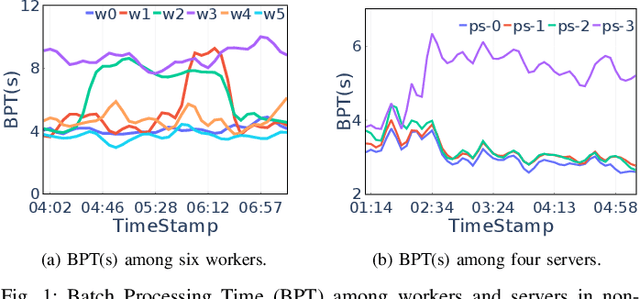
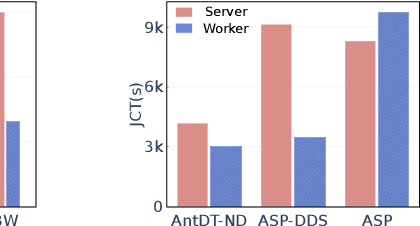
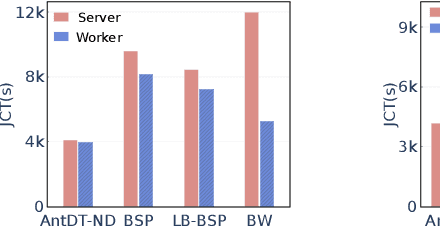
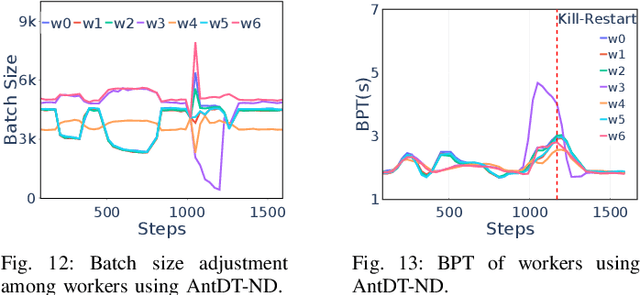
Abstract:Many distributed training techniques like Parameter Server and AllReduce have been proposed to take advantage of the increasingly large data and rich features. However, stragglers frequently occur in distributed training due to resource contention and hardware heterogeneity, which significantly hampers the training efficiency. Previous works only address part of the stragglers and could not adaptively solve various stragglers in practice. Additionally, it is challenging to use a systematic framework to address all stragglers because different stragglers require diverse data allocation and fault-tolerance mechanisms. Therefore, this paper proposes a unified distributed training framework called AntDT (Ant Distributed Training Framework) to adaptively solve the straggler problems. Firstly, the framework consists of four components, including the Stateful Dynamic Data Sharding service, Monitor, Controller, and Agent. These components work collaboratively to efficiently distribute workloads and provide a range of pre-defined straggler mitigation methods with fault tolerance, thereby hiding messy details of data allocation and fault handling. Secondly, the framework provides a high degree of flexibility, allowing for the customization of straggler mitigation solutions based on the specific circumstances of the cluster. Leveraging this flexibility, we introduce two straggler mitigation solutions, namely AntDT-ND for non-dedicated clusters and AntDT-DD for dedicated clusters, as practical examples to resolve various types of stragglers at Ant Group. Justified by our comprehensive experiments and industrial deployment statistics, AntDT outperforms other SOTA methods more than 3x in terms of training efficiency. Additionally, in Alipay's homepage recommendation scenario, using AntDT reduces the training duration of the ranking model from 27.8 hours to just 5.4 hours.
AntBatchInfer: Elastic Batch Inference in the Kubernetes Cluster
Apr 15, 2024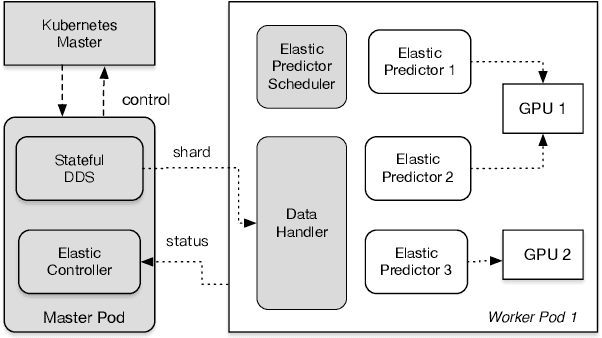
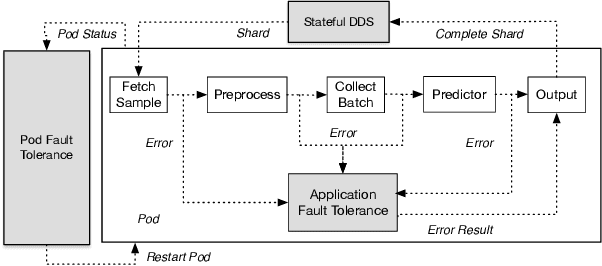
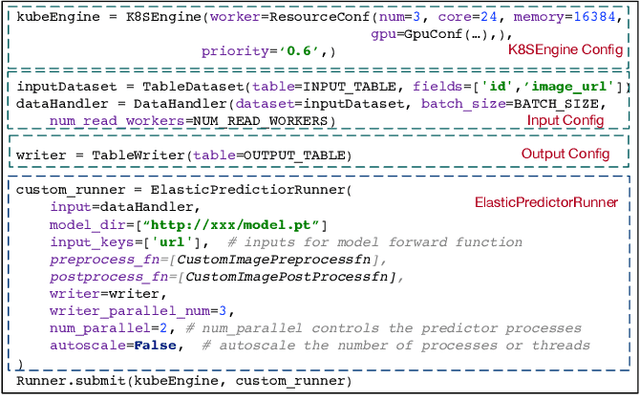
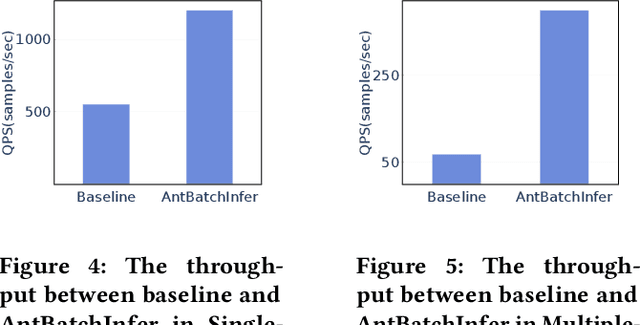
Abstract:Offline batch inference is a common task in the industry for deep learning applications, but it can be challenging to ensure stability and performance when dealing with large amounts of data and complicated inference pipelines. This paper demonstrated AntBatchInfer, an elastic batch inference framework, which is specially optimized for the non-dedicated cluster. AntBatchInfer addresses these challenges by providing multi-level fault-tolerant capabilities, enabling the stable execution of versatile and long-running inference tasks. It also improves inference efficiency by pipelining, intra-node, and inter-node scaling. It further optimizes the performance in complicated multiple-model batch inference scenarios. Through extensive experiments and real-world statistics, we demonstrate the superiority of our framework in terms of stability and efficiency. In the experiment, it outperforms the baseline by at least $2\times$ and $6\times$ in the single-model or multiple-model batch inference. Also, it is widely used at Ant Group, with thousands of daily jobs from various scenarios, including DLRM, CV, and NLP, which proves its practicability in the industry.
G-Meta: Distributed Meta Learning in GPU Clusters for Large-Scale Recommender Systems
Jan 09, 2024

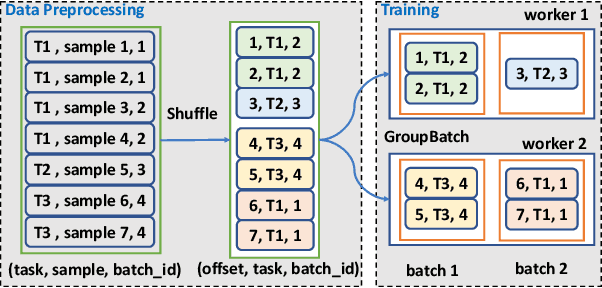
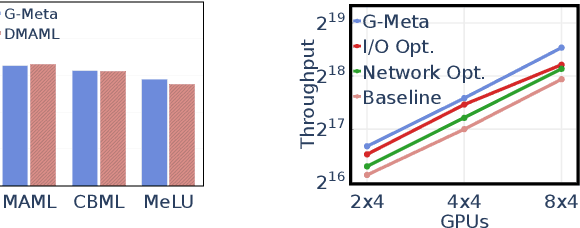
Abstract:Recently, a new paradigm, meta learning, has been widely applied to Deep Learning Recommendation Models (DLRM) and significantly improves statistical performance, especially in cold-start scenarios. However, the existing systems are not tailored for meta learning based DLRM models and have critical problems regarding efficiency in distributed training in the GPU cluster. It is because the conventional deep learning pipeline is not optimized for two task-specific datasets and two update loops in meta learning. This paper provides a high-performance framework for large-scale training for Optimization-based Meta DLRM models over the \textbf{G}PU cluster, namely \textbf{G}-Meta. Firstly, G-Meta utilizes both data parallelism and model parallelism with careful orchestration regarding computation and communication efficiency, to enable high-speed distributed training. Secondly, it proposes a Meta-IO pipeline for efficient data ingestion to alleviate the I/O bottleneck. Various experimental results show that G-Meta achieves notable training speed without loss of statistical performance. Since early 2022, G-Meta has been deployed in Alipay's core advertising and recommender system, shrinking the continuous delivery of models by four times. It also obtains 6.48\% improvement in Conversion Rate (CVR) and 1.06\% increase in CPM (Cost Per Mille) in Alipay's homepage display advertising, with the benefit of larger training samples and tasks.
An Adaptive Placement and Parallelism Framework for Accelerating RLHF Training
Dec 19, 2023



Abstract:Recently, ChatGPT or InstructGPT like large language models (LLM) has made a significant impact in the AI world. These models are incredibly versatile, capable of performing language tasks on par or even exceeding the capabilities of human experts. Many works have attempted to reproduce the complex InstructGPT's RLHF (Reinforcement Learning with Human Feedback) training pipeline. However, the mainstream distributed RLHF training methods typically adopt a fixed model placement strategy, referred to as the Flattening strategy. This strategy treats all four models involved in RLHF as a single entity and places them on all devices, regardless of their differences. Unfortunately, this strategy exacerbates the generation bottlenecks in the RLHF training and degrades the overall training efficiency. To address these issues, we propose an adaptive model placement framework that offers two flexible model placement strategies. These strategies allow for the agile allocation of models across devices in a fine-grained manner. The Interleaving strategy helps reduce memory redundancy and communication costs during RLHF training. On the other hand, the Separation strategy improves the throughput of model training by separating the training and generation stages of the RLHF pipeline. Notably, this framework seamlessly integrates with other mainstream techniques for acceleration and enables automatic hyperparameter search. Extensive experiments have demonstrated that our Interleaving and Separation strategies can achieve notable improvements up to 11x, compared to the current state-of-the-art (SOTA) approaches. These experiments encompassed a wide range of training scenarios, involving models of varying sizes and devices of different scales. The results highlight the effectiveness and superiority of our approaches in accelerating the training of distributed RLHF.
Rethinking Memory and Communication Cost for Efficient Large Language Model Training
Oct 09, 2023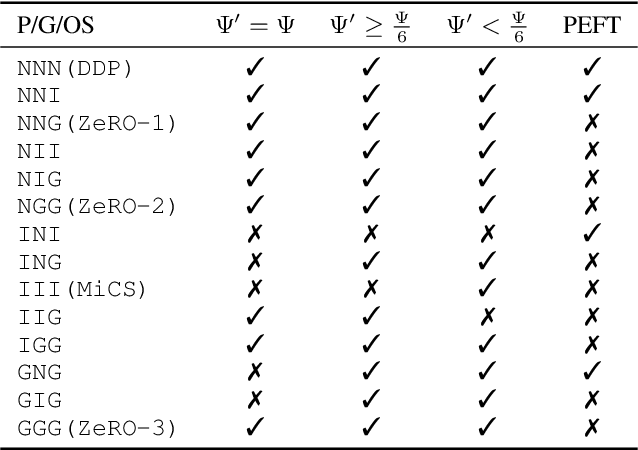
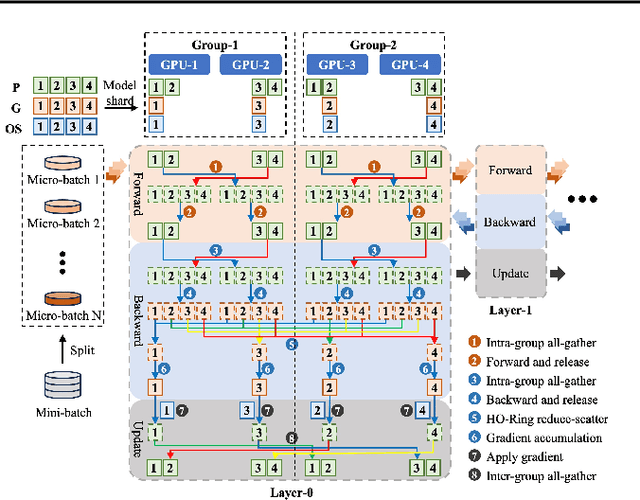
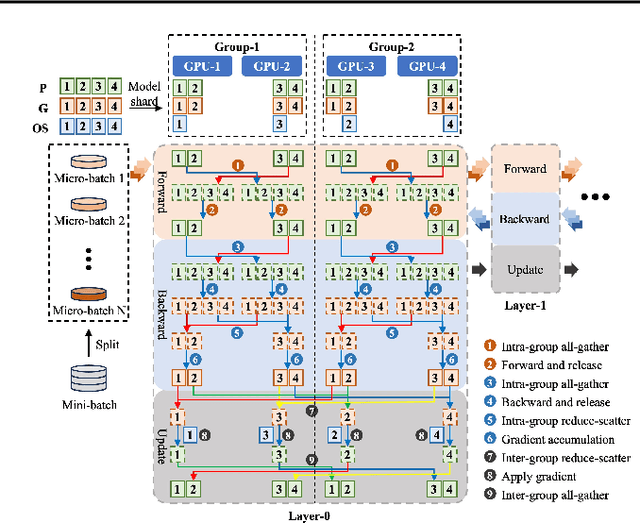
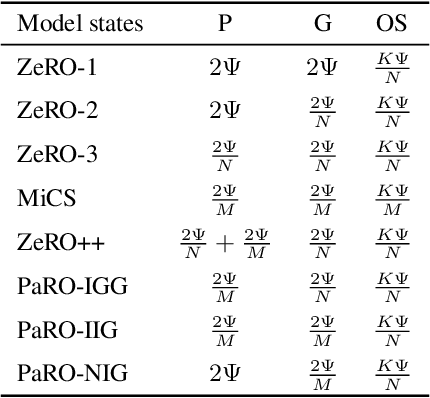
Abstract:As model sizes and training datasets continue to increase, large-scale model training frameworks reduce memory consumption by various sharding techniques. However, the huge communication overhead reduces the training efficiency, especially in public cloud environments with varying network bandwidths. In this paper, we rethink the impact of memory consumption and communication overhead on the training speed of large language model, and propose a memory-communication balanced \underline{Pa}rtial \underline{R}edundancy \underline{O}ptimizer (PaRO). PaRO reduces the amount and frequency of inter-group communication by grouping GPU clusters and introducing minor intra-group memory redundancy, thereby improving the training efficiency of the model. Additionally, we propose a Hierarchical Overlapping Ring (HO-Ring) communication topology to enhance communication efficiency between nodes or across switches in large model training. Our experiments demonstrate that the HO-Ring algorithm improves communication efficiency by 32.6\% compared to the traditional Ring algorithm. Compared to the baseline ZeRO, PaRO significantly improves training throughput by 1.2x-2.6x and achieves a near-linear scalability. Therefore, the PaRO strategy provides more fine-grained options for the trade-off between memory consumption and communication overhead in different training scenarios.
An Effective and Efficient Time-aware Entity Alignment Framework via Two-aspect Three-view Label Propagation
Jul 12, 2023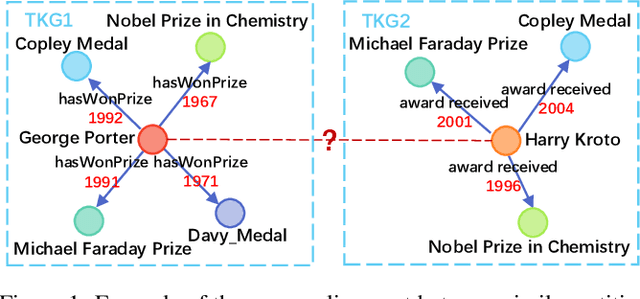


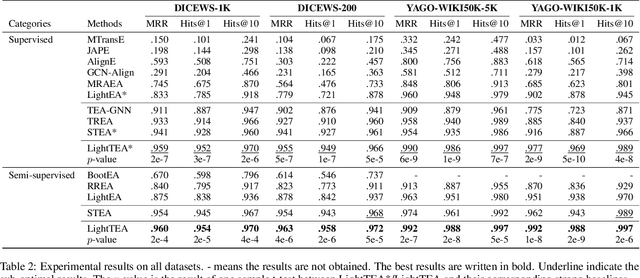
Abstract:Entity alignment (EA) aims to find the equivalent entity pairs between different knowledge graphs (KGs), which is crucial to promote knowledge fusion. With the wide use of temporal knowledge graphs (TKGs), time-aware EA (TEA) methods appear to enhance EA. Existing TEA models are based on Graph Neural Networks (GNN) and achieve state-of-the-art (SOTA) performance, but it is difficult to transfer them to large-scale TKGs due to the scalability issue of GNN. In this paper, we propose an effective and efficient non-neural EA framework between TKGs, namely LightTEA, which consists of four essential components: (1) Two-aspect Three-view Label Propagation, (2) Sparse Similarity with Temporal Constraints, (3) Sinkhorn Operator, and (4) Temporal Iterative Learning. All of these modules work together to improve the performance of EA while reducing the time consumption of the model. Extensive experiments on public datasets indicate that our proposed model significantly outperforms the SOTA methods for EA between TKGs, and the time consumed by LightTEA is only dozens of seconds at most, no more than 10% of the most efficient TEA method.
 Add to Chrome
Add to Chrome Add to Firefox
Add to Firefox Add to Edge
Add to Edge